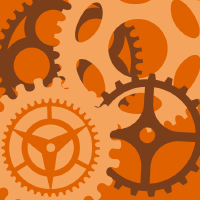Topic Menu
► Topic MenuTopic Editors



Additive Manufacturing
Topic Information
Dear Colleagues,
Additive Manufacturing (AM), one of the nine enabling technologies of Industry 4.0, are experiencing rapid growth. Nevertheless, AM implementation by industries is still limited compared to its intrinsic potential.
To increase its adoption in the various sectors, research activities concerning printing and post-process advanced technologies, innovative materials and design/simulation tools are necessary. The study of new supply chains and business models, the AM integration with the other enabling technologies of Industry 4.0 could boost emerging scenarios. These actions would improve the environmental and social sustainability of production processes, favouring the achievement of the related SDGs expected for 2030.
Additive Manufacturing relevant topics include:
- Improvement of the design and manufacturing workflow through advanced methods and software tools
- Environmental sustainability opportunities of AM
- Innovative AM technologies in medicine, energy, aerospace, automation, robotics,
- Advanced post-processing technologies
- Advanced AM technologies (e.g. 5 axis, high-speed printing, instant VAT-photopolymerisation, etc.)
- Innovative materials
- 3D printing infrastructure for data management and cloud-based additive manufacturing
Dr. Marco Mandolini
Dr. Paolo Cicconi
Dr. Patrick Pradel
Topic Editors
Keywords
- additive manufacturing
- 3D printing
- polymers additive manufacturing
- metal additive manufacturing
- post-processing technologies
- design for additive manufacturing
- process simulation
- topology optimization
- generative design
- Industry 4.0
- cloud-based advanced technologies
Participating Journals
| Journal Name | Impact Factor | CiteScore | Launched Year | First Decision (median) | APC |
|---|---|---|---|---|---|

Applied Sciences
|
2.7 | 4.5 | 2011 | 16.9 Days | CHF 2400 |

Applied Mechanics
|
- | 1.4 | 2020 | 22.5 Days | CHF 1200 |

Processes
|
3.5 | 4.7 | 2013 | 13.7 Days | CHF 2400 |

Metals
|
2.9 | 4.4 | 2011 | 15 Days | CHF 2600 |

Journal of Manufacturing and Materials Processing
|
3.2 | 5.5 | 2017 | 14.2 Days | CHF 1800 |

MDPI Topics is cooperating with Preprints.org and has built a direct connection between MDPI journals and Preprints.org. Authors are encouraged to enjoy the benefits by posting a preprint at Preprints.org prior to publication:
- Immediately share your ideas ahead of publication and establish your research priority;
- Protect your idea from being stolen with this time-stamped preprint article;
- Enhance the exposure and impact of your research;
- Receive feedback from your peers in advance;
- Have it indexed in Web of Science (Preprint Citation Index), Google Scholar, Crossref, SHARE, PrePubMed, Scilit and Europe PMC.

